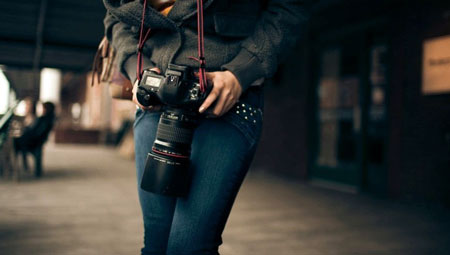Everyone seems to be a photographer these days, but as someone depending on paychecks for shoots you can’t just lower prices again and again to compete with newcomers. Well many lower prices because for professional photographers, advancements in technology pose a big dilemma. Cameras make assignments easier, they take better photos and batch processing can simplify the workflow. The other side of the digital coin? Digital photography has lowered the barrier to entry by competitors.
The instant feedback provided by digital cameras is promising and tempting. Before, with film, good photography was the privilege of a chosen few who were really dedicated to their craft. Today, thanks to dead easy post-processing and nearly intelligent cameras, anyone can toy with the idea of doing photography full time, especially in these difficult times with unemployment still high and cost pressure growing.

Meaning that long-established photographers lose wedding and other shooting jobs to “mamarazzis” and “digital debbies” who take their fancy digital cameras and enthusiastically do what an established photographer might do better, but the newbies do it for a very low price.
For them it’s still better than nothing. For the once successful photographer however this is not only humiliating, the crisis becomes existentialist. Whereas the amateur a.k.a. enthusiast has no overhead to pay, the professional photographer might have a studio and staff. And if a newcomer needs staff, backdrops and additional equipment, they can easily rent the services and undercut the fees sought by professional photographers.
Never mind that quality becomes secondary. All people need is for the photo to be “good enough.”
Every photographer feels this vicious cycle of smartphones becoming the new standard. In a way that’s refreshing. Established photographers have to reassess their approach while especially the wedding photography sector moves away from the usual portraits and exhausted, always-the-same motifs.
Veteran photographers contend that the newcomers do little more than take action shots, like photojournalists, while shying away from the established portraiture work. It’s this work, they claim, that requires someone with a real understanding of the subtleties of lighting. But by clicking away, the laws of probability even enable novices to wind up with some decent shots.
It also doesn’t help that most people don’t want photo albums anymore. Like alcohol sales for restaurants, albums were a high margin piece of the package, with photographers charging about three times what it cost to produce them. Now, brides just want the photo disc — and the copyrights to their photos.
So who’s to blame. The (formerly) established veteran or the new market? Some might reasonably argue that the introduction of new technologies has always resulted in a softening of prices and a lowering of the bars to entry across any number of fields. Wedding photography is no different, and those working in the field find themselves adjusting or leaving.
What’s left to do when you could once charge $3,000 to $5,000 a wedding, bringing in about $90,000 a year, and today the competition does weddings for less than $1,000? The golden days are irrevocably gone, but this is what other event photographers do who saw their yearly revenues slashed:
- Move the business to a warmer region: By doing so and working a longer, warmer wedding and events season, some of the declines can be recouped.
- Cut costs: Should a studio still be needed, it’s always cheaper to rent the place and equipment. Cut down on everything not absolutely needed.
- Improve workflow: Times are gone when whole families snuggled together and shared a photo album until late night. Today, people want to see images on a screen and store them on all sorts of devices. They won’t even notice that the photographer cut the amount of time worked at a wedding in half.
- Efficiency: You can still earn $200 an hour. Because all you have to do is burn a disc and give it to the bride. The better photographer you are, the quicker you’re done, ready for the next job. Yes, your style and niche sell, but on top of it efficiency rules. That’s how you can make money in this industry.


